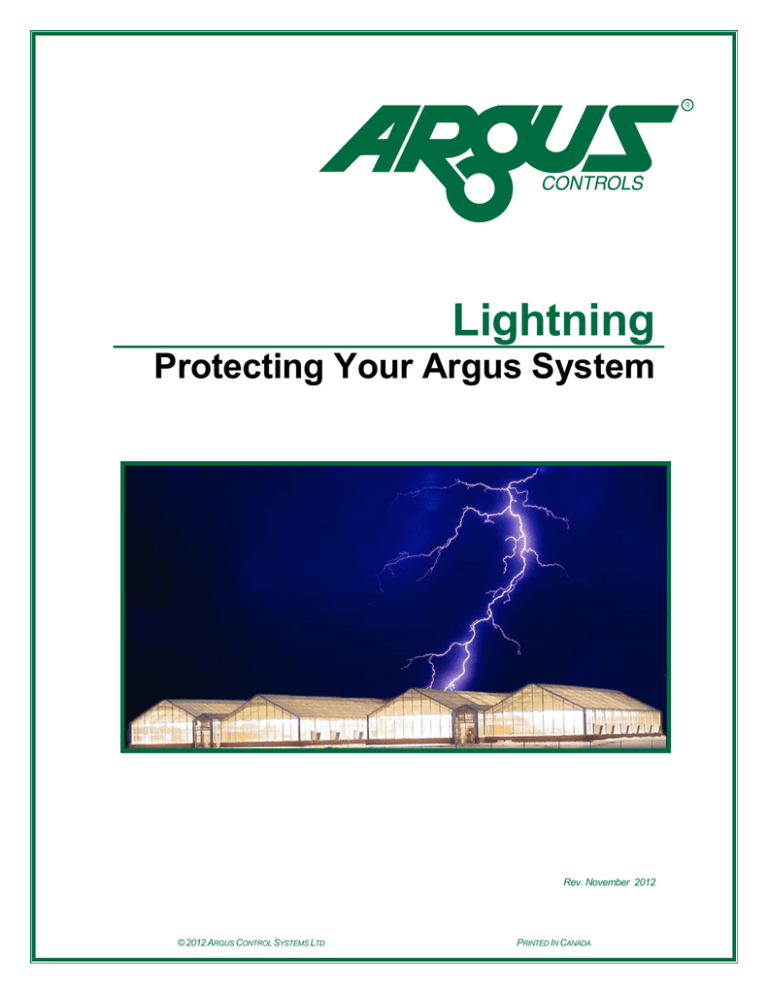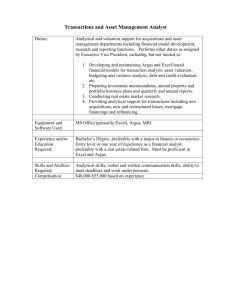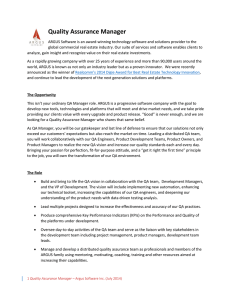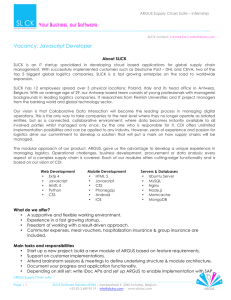
Lightning
Protecting Your Argus System
Rev. November 2012
© 2012 ARGUS CONTROL SYSTEMS LTD
PRINTED IN CANADA
Lightning - Protecting Your Argus System
©
2012 Argus Control Systems Limited. All Rights Reserved.
This publication may not be duplicated in whole or in part by any means without the prior written
permission of Argus Control Systems Limited.
Limits of Liability and Disclaimer of Warranty:
The information in this manual is furnished for informational use only and is subject to change without
notice. Although our best efforts were used in preparing this book, Argus Control Systems Limited
assumes no responsibility or liability for any errors or inaccuracies that may appear.
Trademarks:
Argus Controls, Argus Graph, Argus Control Systems, Argus Titan, and the Argus logo are
trademarks of Argus Control Systems Limited.
Argus Control Systems Ltd.
1281 Johnston Road
White Rock, BC V4B 3Y9
Canada
Telephone: (604) 538-3531 or (604) 536-9100
Toll Free Sales: (800) 667-2090 (North America)
Toll Free Service: (888) 667-2091 (North America)
Fax: (604) 538-4728
E-mail: argus@arguscontrols.com
Web: www.arguscontrols.com
Written and designed by Argus Control Systems Limited.
Printed in Canada.
Revision Date: November 2012
-1© 2012 ARGUS CONTROL SYSTEMS LTD
Protecting your Argus Equipment
Lightning strikes can be disastrous for any electronic device. A single lightning bolt can
unleash as much energy as a ton of TNT. There is simply no way to fully protect any
electrical equipment that sustains a direct hit. Fortunately, the ‘blast area’ of a lightning strike
is very narrow and most control system components except for the weather station are
protected inside the building. However, even when the equipment does not receive a direct
hit, a massive surge of electricity can be conducted through connected wiring. If this energy
is not safely drained away or blocked before entry, it can build to dangerous levels and
cause damage to electronic components.
Your Argus control system uses a multi-level approach for protecting your control equipment
from electrical damage. Each component is equipped with built-in protection devices to
resist power surges and lightning-related electrical spikes. Additional stand-alone lightning
protection components are available to protect your equipment against lightning surges that
could be propagated through the communications wiring. These devices are designed to
safely shed power spikes or to physically disconnect the wiring when dangerous currents
are detected.
To obtain the maximum benefit of the protection circuitry built in to your Argus system, it is
extremely important that the equipment be properly installed as per your Argus wiring
diagrams and bonded to a good earth ground system.
The following guidelines must be observed to ensure adequate protection for your system.
-2© 2012 ARGUS CONTROL SYSTEMS LTD
General Guidelines
1
Ensure that your facility has the main electrical ground properly connected to a
ground rod system. Facilities with many buildings may have more than one
grounding point.
2
Follow your Argus wiring diagrams and instructions carefully to properly bond the
Argus equipment to a suitable earth ground. Normally this will be the ground system
for your electrical system. An electrician can test impedance of the electrical earth
ground of your site to ensure that it is adequate.
3
Use good surge protection on powered lines and telephone modems. Direct
lightning strikes to power and phone lines can cause power failures, power spikes
and fluctuating power.
4
Keep your wire runs inside of buildings whenever possible and keep them as short
and as low as possible. A direct hit to an outdoor wire run will damage the wire and
the control system components connected to it.
5
Long wire runs, such as those on the device or system network, may act as an
antenna, picking up large inductive energy surges from nearby lightning strikes
causing damage to Argus system components.
6
If your controlled facility is located in a high lightning area, lightning arrestor
equipment should be installed to divert or shunt the lightning away from your
building and wiring. This will provide protection for all of your electrical equipment as
well as your Argus control system.
7
The Argus Weather Station is often the highest point on the greenhouse, making it
more susceptible to direct lightning strikes. In addition, it may pick up current from a
nearby strike, and conduct high voltages to other system components. Argus
provides special arrestor protection equipment for all weather stations.
Argus System Protection
Argus systems are designed with lightning protection in mind. Built-in lightning and surge
protection is provided through the use of varistors, resistors, transorbs, gas discharge tubes,
fusing, transformer isolation and grounding.
1
All control boards with communication capabilities have internal lightning protection.
Every network connection, input channel, output channel and communication port is
designed to resist small power surges and lightning-related electrical spikes.
2
Specially designed NLP (Network Lightning Protection) and NFLP (Network Fused
Lightning Protection) modules are available to protect your equipment from lightning
induced surges propagated along the communications wiring.
3
ISOTEL power bars are used to protect the PC power supplies and modem
connections from power surges and electrical spikes originating in these wires.
4
Argus can install additional lightning protection on the main power supply and on the
individual transformers which power the Argus system. This is usually not needed.
-3© 2012 ARGUS CONTROL SYSTEMS LTD
Conclusions
A well designed and properly installed and maintained computer control system can be very
resistant to damage caused by lightning. No matter what level of protection you install, there
is almost nothing you can do about a direct strike. Luckily, these events are rare. The
extensive protection systems that Argus uses will minimize and localize damage as much as
possible.
Avoiding lightning damage boils down to a bit of luck, good system design, and proper
installation practices. We usually do not recommend an overly aggressive level of protection
for most new customers unless they have a strong history of lightning damage at the site.
The added cost and complexity of additional protection is seldom justified. However, when
problems are recognized, a systematic approach to engineering a solution can greatly
reduce the chances of subsequent failures.
An Argus Sales representative can assist you in engineering a cost-effective system with the
least amount of susceptibility to lightning damage.
-4© 2012 ARGUS CONTROL SYSTEMS LTD
ARGUS CONTROL SYSTEMS LTD.
1281 Johnston Road
White Rock, British Columbia
Canada V4B 3Y9
Telephone:
Toll Free Sales:
Toll Free Service:
Fax:
E-mail:
Web Site:
(604) 538-3531 or (604) 536-9100
(800) 667-2090 (North America)
(888) 667-2091 (North America)
(604) 538-4728
argus@arguscontrols.com
www.arguscontrols.com
Information in this manual is subject to change without notice.
Copyright 2012 Argus Control Systems Ltd. Printed in Canada
Argus is a registered trademark of Argus Control Systems Ltd.
© 2012 ARGUS CONTROL SYSTEMS LTD






